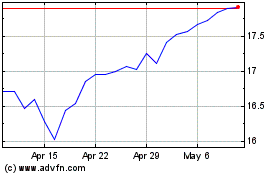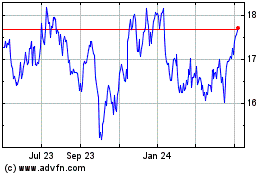PG&E Planned Trading Curbs Jar Investors -- WSJ
February 26 2019 - 3:02AM
Dow Jones News
By Peg Brickley
This article is being republished as part of our daily
reproduction of WSJ.com articles that also appeared in the U.S.
print edition of The Wall Street Journal (February 26, 2019).
An indication from PG&E Corp. that it might restrict trading
in its debt has set alarm bells ringing among distressed investing
funds that have swarmed around the California utility's
mega-billion-dollar bankruptcy case.
Papers filed in U.S. Bankruptcy Court in San Francisco in recent
days warn of threats to the market where PG&E's bonds are being
bought and sold if the utility pursues one of many potential paths
to getting out of chapter 11.
Valuable tax breaks could be at risk if there is too much
trading in PG&E's debt, which could trip triggers in Internal
Revenue Service rules, the company said. Some $4 billion in net
operating losses are available to offset taxable income but, under
the tax code, that could be reduced if too much stock or debt
changes hands. PG&E is asking a judge to consider limiting the
trading action, and bondholders are fighting back.
"The requested relief not only directly impairs the rights and
interests of the claimholders, it also threatens market liquidity,"
wrote lawyers for an unofficial committee of unsecured bondholders.
The official committee that represents all unsecured creditors,
including bondholders, said PG&E is moving too soon to head off
a threat that may never materialize, and trampling creditors'
rights in the process.
"The relief requested today may cast a shadow of uncertainty,
create an overhang on the market and trading of the senior notes
and disrupt the trading or liquidity of the senior notes," BOKF
N.A., a trustee for more than $17 billion in bond debt, said in a
separate filing.
PG&E wants the right to set limits on major trades in debt,
as well as stock, to safeguard against tax-law restrictions on
change in ownership. The company hasn't determined the shape of its
bankruptcy exit plan, but it is possible creditors could be given
stock in exchange for their debt, which could affect the calculus
for ownership changes.
The proposed trading restrictions will be up for review this
week, at the San Francisco utility's second major court hearing
after its January decision to file for chapter 11 protection. A
representative for the company declined to comment.
Hit with lawsuits from thousands of people with damage claims
stemming from years of wildfires, PG&E filed for bankruptcy
without a clear path to get out. It is expected to reorganize, but
the form of that reorganization is up in the air.
PG&E's bankruptcy has multiple moving parts, from figuring
out the wildfire damages to dealing with big power contracts. Each
dispute will be an investment opportunity for traders, a chance to
make money as prices rise and fall in response to developments in
the courtroom.
One of the first names to pop up on PG&E's court docket in
San Francisco was Seth Klarman's Baupost Group LLC, a hedge fund
that made hundreds of millions of dollars trading in Westinghouse
Electric Co.'s debt during the company's bankruptcy case. Not far
behind was Paul Singer's Elliott Management Corp., another hedge
fund adept at profiting from trades in the debt of bankrupt
companies.
Business claims, too, will be traded during PG&E's
bankruptcy, as suppliers owed money by the utility look to limit
their risk by selling their bankruptcy claims to distressed
investors amassing stakes.
It is against that backdrop that PG&E is asking preapproval
for trade limits that will only kick in if its path out of chapter
11 is one that will set off complex triggers in federal tax
law.
Write to Peg Brickley at peg.brickley@wsj.com
(END) Dow Jones Newswires
February 26, 2019 02:47 ET (07:47 GMT)
Copyright (c) 2019 Dow Jones & Company, Inc.
PG&E (NYSE:PCG)
Historical Stock Chart
From Apr 2024 to May 2024

PG&E (NYSE:PCG)
Historical Stock Chart
From May 2023 to May 2024
